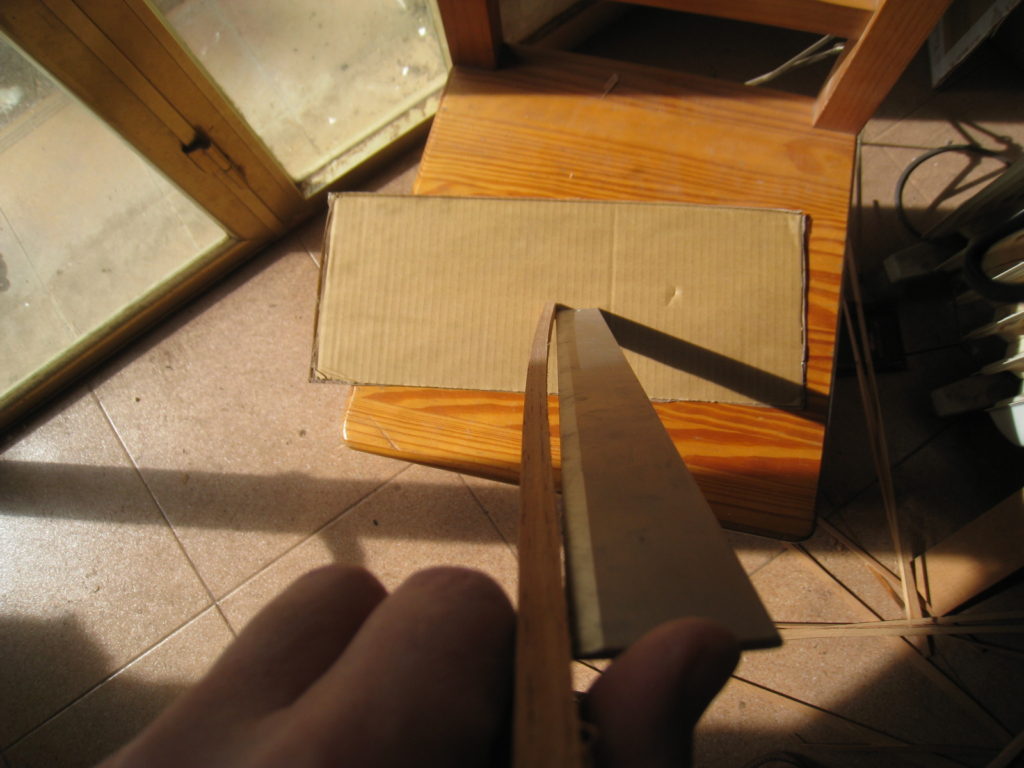I have already ranted about wood on a couple of occasions but this week I was preparing cedar and I feel like there is a bit more to say on the subject. My objective today will be to get all of you to stop using the the term “master grade” when talking about wood. Here are some photos showing things to avoid in the woods we use for guitar-making. Woods sold as master grade can often show these defects once they are planed or cut. The best wood is that which, in the hands of a given maker, makes for the best guitar. The only person who can choose the wood is the maker.
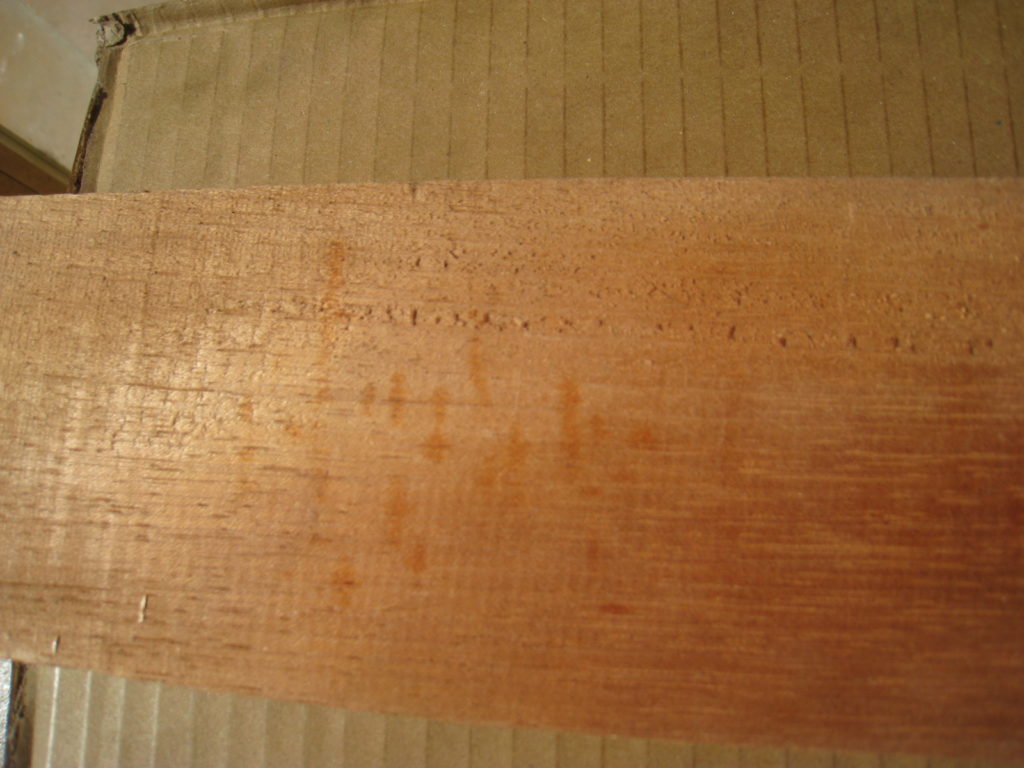 The first example shows a cedar neck which is lightweight and perfectly cut but has a pithy or stringy part which is very hard to sand and finish nicely (bad wood). Also I don’t trust it to be stiff. Below is a fretboard which has a kind of ripple or flame which will make it very difficult to plane, once glued to the guitar before the frets are installed. This is a very important step for allowing adjustment of the action and it is not a good time for tear-out.
The first example shows a cedar neck which is lightweight and perfectly cut but has a pithy or stringy part which is very hard to sand and finish nicely (bad wood). Also I don’t trust it to be stiff. Below is a fretboard which has a kind of ripple or flame which will make it very difficult to plane, once glued to the guitar before the frets are installed. This is a very important step for allowing adjustment of the action and it is not a good time for tear-out. 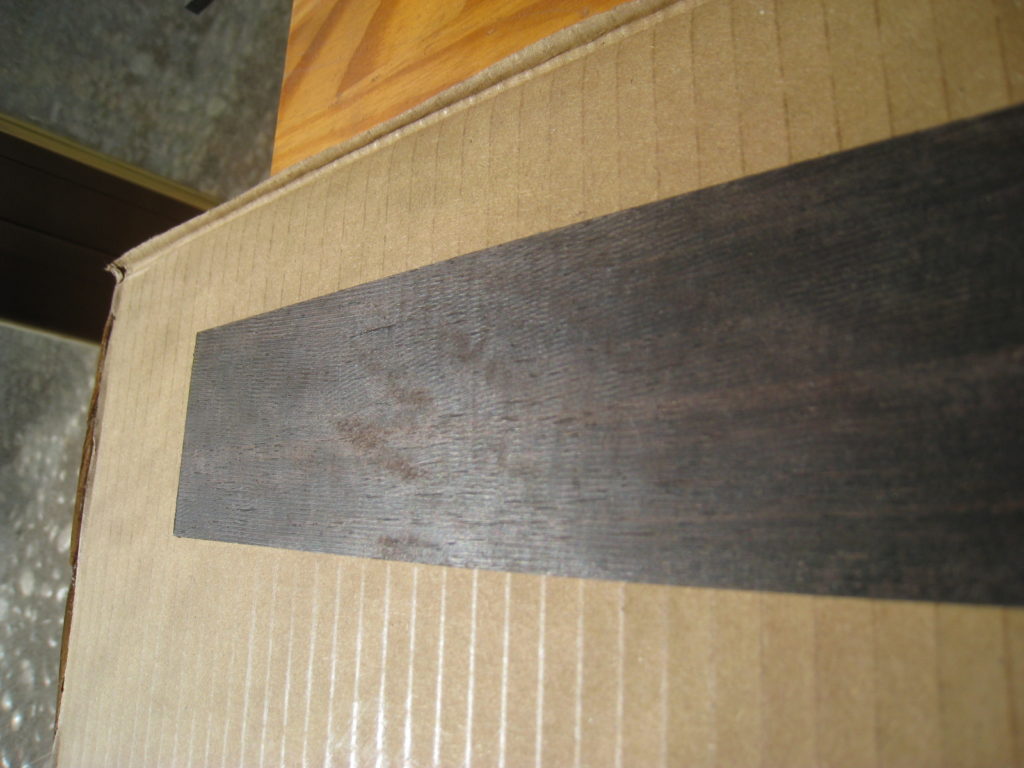 The next picture shows some beautiful cedar but as the cut was started the tensions in the wood caused it to close on itself. Not only is this dangerous on the table saw but you certainly don’t want to use this wood for a neck or a bar as it will likely deform with time.
The next picture shows some beautiful cedar but as the cut was started the tensions in the wood caused it to close on itself. Not only is this dangerous on the table saw but you certainly don’t want to use this wood for a neck or a bar as it will likely deform with time.  Once cut, the stick will look like the photo which follows.
Once cut, the stick will look like the photo which follows.
When cutting wood for bars or necks the cedar should be split to ensure maximum strength and stability. Below is an example. 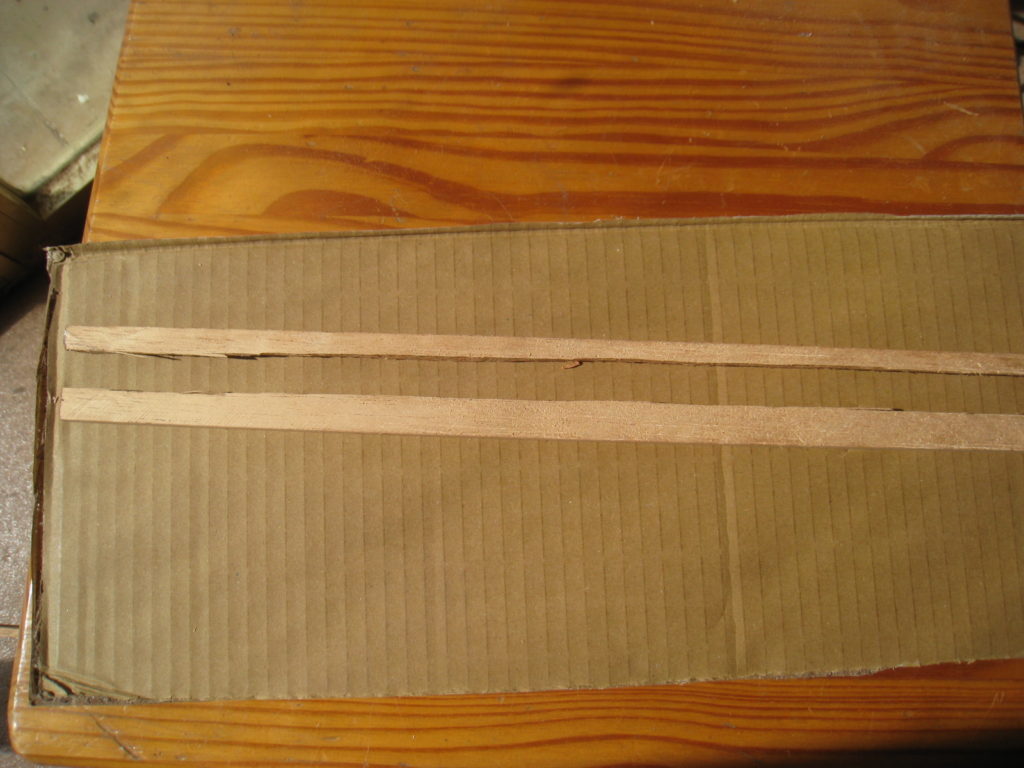 One thing you seldom run into when splitting cedar is a break like the one shown below, you sometimes get a hint from a dark line which shows where it will break. Some say these are fractures caused by felling the tree; I really don’t know, but I can tell you that I always avoid using the piece if I see evidence of this.
One thing you seldom run into when splitting cedar is a break like the one shown below, you sometimes get a hint from a dark line which shows where it will break. Some say these are fractures caused by felling the tree; I really don’t know, but I can tell you that I always avoid using the piece if I see evidence of this.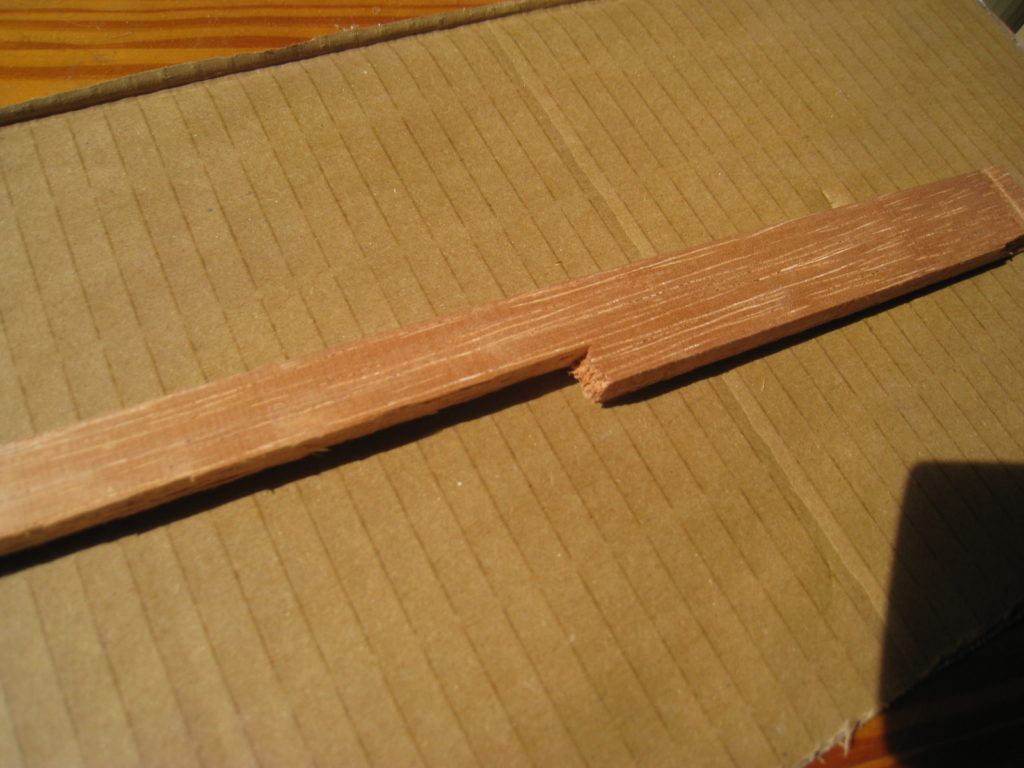
The rosewoods too have their secrets, what some see as interesting or pretty grain others see as a tendency to deform or crack when we work with it. Flatsawn wood from very small trees, stump wood and severe run-out can all cause problems. 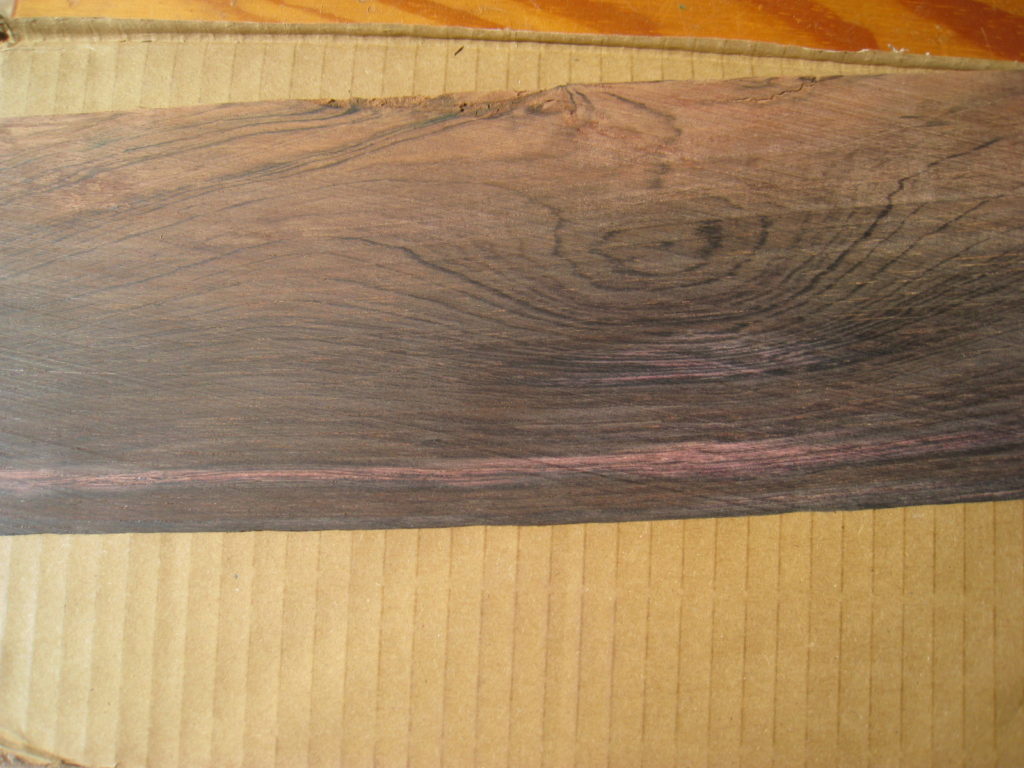 Ebony is the most prone to shrinkage of all the woods we use, a good reason to let it age as long as possible before using it on a guitar. Here is an ebony board which will be thrown out because of deformation. At some point before 1999 when I bought it it was sanded flat on both sides but as you can see from the picture t
Ebony is the most prone to shrinkage of all the woods we use, a good reason to let it age as long as possible before using it on a guitar. Here is an ebony board which will be thrown out because of deformation. At some point before 1999 when I bought it it was sanded flat on both sides but as you can see from the picture t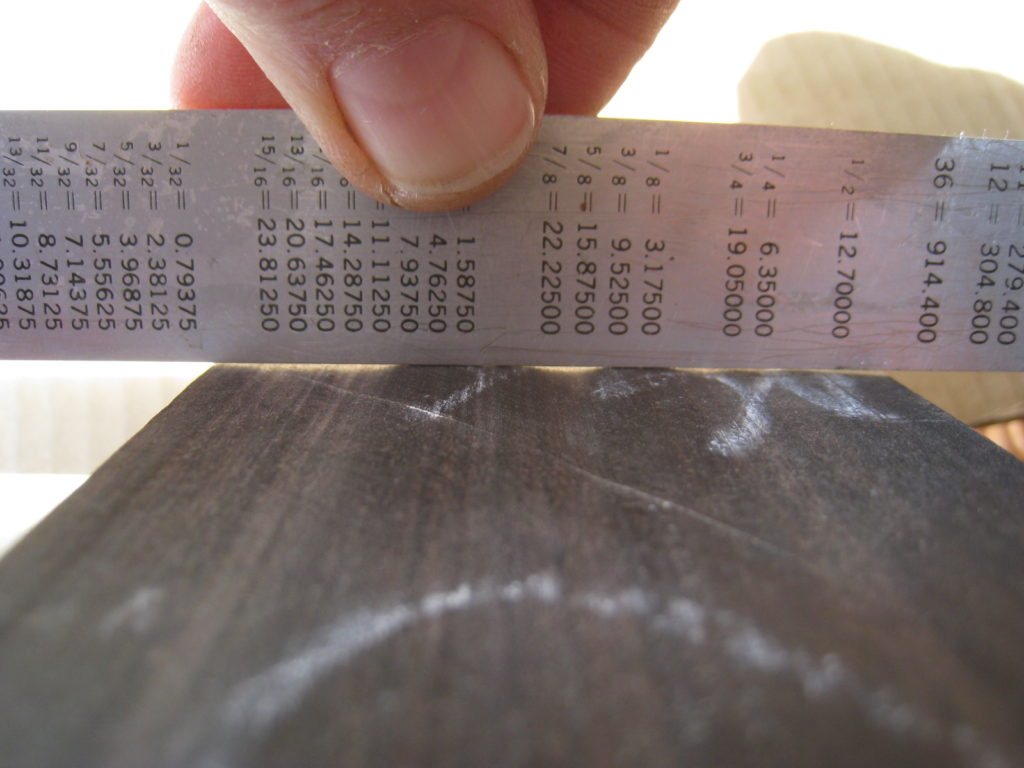 he surface has lost any semblance of flatness.
he surface has lost any semblance of flatness.
The last wood I will mention is spruce as I think it is the one that gets the most attention from the “master grade” folks. When spruce is cut it is not cost-effective to throw away the pieces that have run-out or are not riftsawn. Quartersawing produces a few excellent pieces but as more cuts are taken the pieces are progressively more skewed with respect to the radius of the tree. Splitting a tree that is twisted (European spruce very often is) doesn’t work very well for the woodseller either so run-out is very often present. I think it goes without saying that dealers do not test for stiffness so basically the things we as builders value are not taken into account when wood is graded. Master grade is assigned according to colour, grains per inch instead of the criteria that we use. Below is a top that has a knot which was cut out but shows the shadow which also must be avoided. 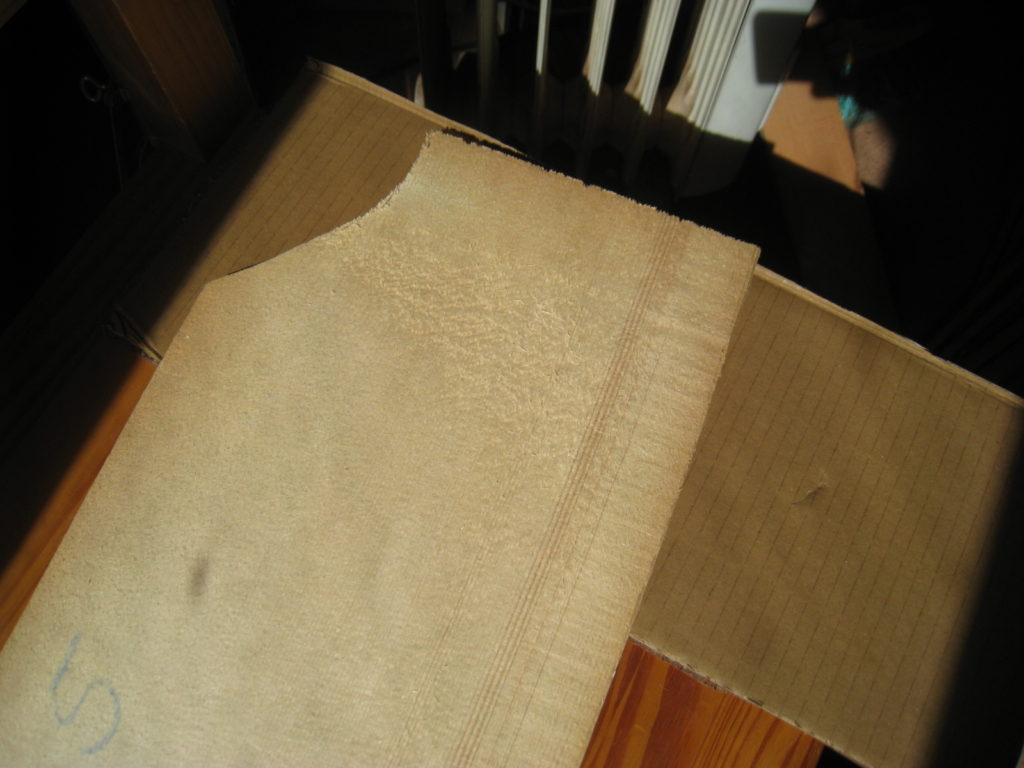
Once again, please trust your guitar-maker. If you feel you must ask him to use the best possible woods don’t ask him to use someone else’s criteria to choose the wood. He knows what works for him and he knows more about wood for guitars than you and the wood sellers will ever learn.

